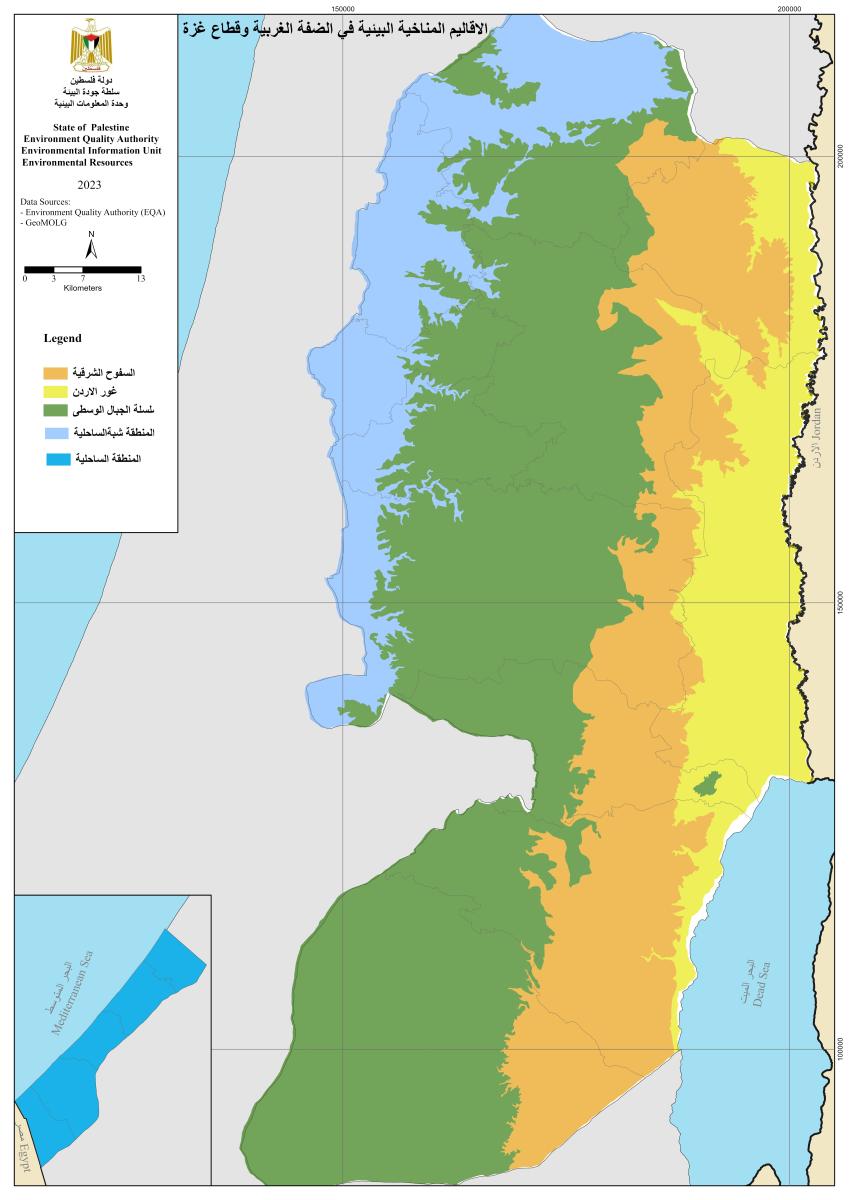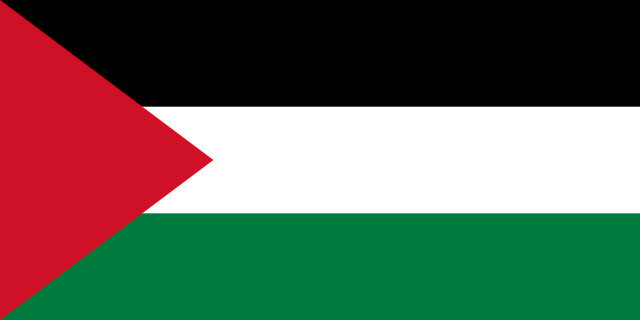The climate in Palestine is mild Mediterranean climate in most of the country with elements of Arid regions in Southeastern parts of the country and in the lower Jordan valley. The central mountain ranges are at elevations up to 1200 meters. The eastern parts of these mountains thus receive less rain and include Irano Turanian Habitats as well as Saharo Arabian Habitats. The hilltops and Western slopes have typical Mediterranean woodland and shrubland which then slope further to coastal habitats. The coastal regions usually have high humidity hot and dry in summer but not too cold in winter. The Jordan valley itself gets rainfall from 200 mm (in the north) to <100 mm (in the south around the Dead Sea). Temperatures have already increased and are projected to increase even further and rainfall is expected to decline in the next two to three decades due to global human-induced climate change. Human induced climate change will drastically effect the Arab world (Verner 2012). A World Bank study shows impacts include water resource decline will be drastic by 2040. In the West Bank and Gaza, while demand will double, supply will shrink dramatically! When coupled with population growth and habitat destruction, both the World Bank (Verner 2012) and the UN predict situation to become unlivable (UN 2012). Newer models attempt to integrate species own responses (ecologically, genetically etc.) in predicting changes in species distribution following climate change and its impact on the habitat (Lavergne et al. 2010).
There are models that foresee more direful consequences in the Mediterranean zone (Sala et al., 2000). The World Bank issued a report showing that the Arab world is already severely suffering from climate change. The report shows an increase in annual average temperature in the last 20 years (Verner, 2012) and predicts a rise by 4 to 5 degrees in the next two to three decades as well as a decrease in annual rainfall by nearly 25% that would cause more frequent and severe droughts. Simulated models attempt to integrate species’ own responses (ecologically, genetically, etc.) in predicting changes in species distribution following climate change and its impact on the habitat (Lavergne et al., 2010). But preliminary data in Palestine in at least one study shows decline in vertebrate biodiversity as desertification spreads into the Bethlehem District (Qumsiyeh et al., 2014b). In our areas temperatures are expected to rise 2 C by 2050 and by up to 4.5 C by 2090 with concomitant decrease in annual rainfall by 20-25% at a minimum especially in the southern governorates (Morice et al., 2012, SP 2020b).
On the 17th of March 2016, the State of Palestine officially became the 197th party to the United Nations Framework Convention on The Climate Change. It also signed and ratified the Paris Agreement on the 22nd of April, 2016. The objective of UNFCCC is to achieve stabilization of greenhouse gas emissions in the atmosphere to a level that would cease devastating anthropogenic interference with the climate system. Such a level should be reached within a reasonable time frame to enable ecosystems to respond naturally to climate change, to guarantee that food production is not threatened and to enable economic development to proceed in a sustainable manner. Parties, including developing and developed countries, shall be guided by the following: 1) parties should protect the ecosystem for the present and future generation of humankind through taking precautionary measures to anticipate towards reducing the causes of climate change and mitigate its adverse effects 2) developing countries parties should be given full consideration in light of the disproportionate burden that these parties would bear under the conviction 3) parties should promote sustainable development and integrate to national development programs that would enact policies and measures to protect the climate system against anthropic change 4) also parties should cooperate to develop open and supportive international economy that would empower and sustain the economic growth and development, specially developing parties.
See References in the Publications

